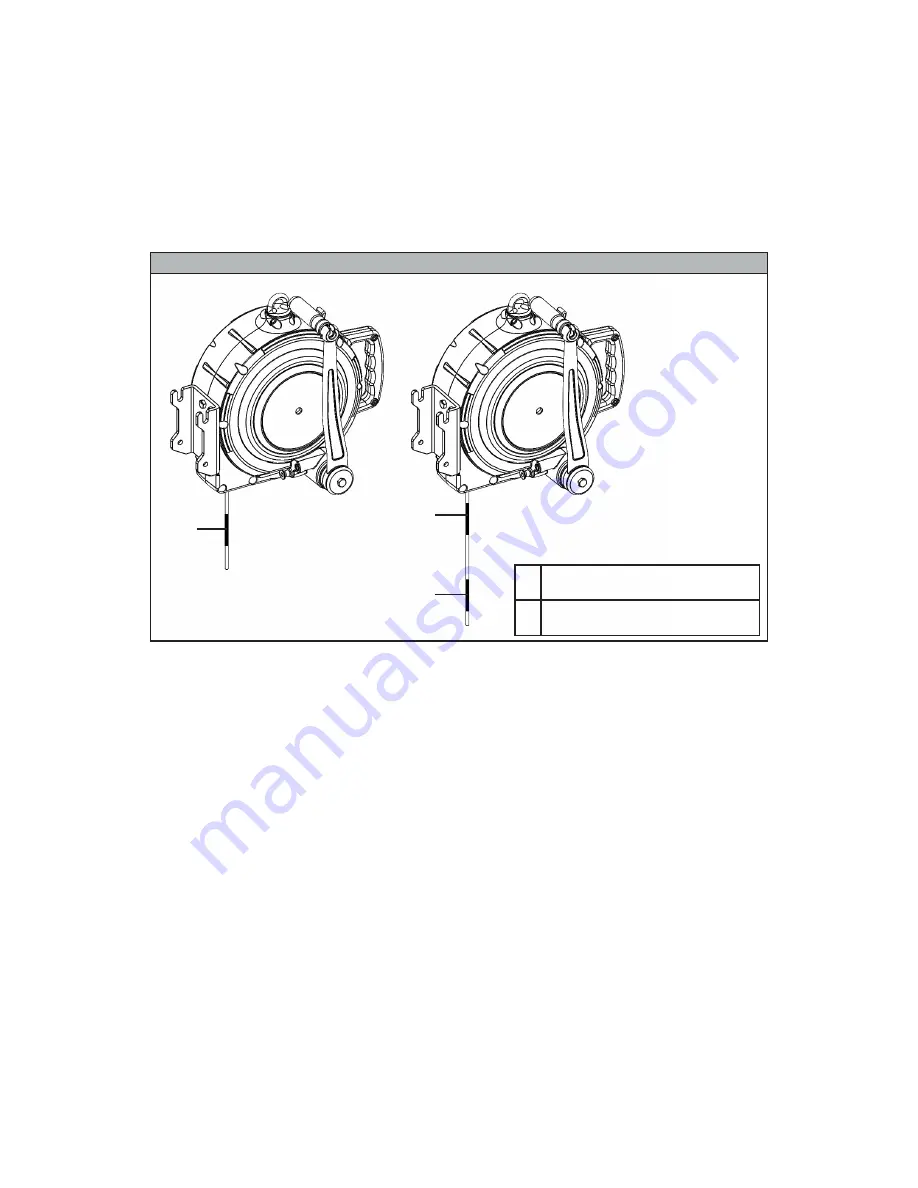
5.7.4 Inspect the Cable:
The SRD lifeline is galvanized wire rope, and subject to certain hazards. Inspect the lifeline before each use for the
conditions as described in Section 7.
5.8 Using the SRL-R:
Do not use the SRL-R if inspection shows damage or any malfunction. Don the FBH in accordance with the FBH
manufacturer’s instructions. Follow the instructions contained in this manual and on the labels. Failure to follow instructions may result
in serious injury or death. Connect the leg end snap hook to the dorsal D-ring on the FBH. Ensure the carabiner closes and locks. Attach
the housing carabiner to the chosen anchorage and ensure the carabiner closes and locks. Ensure all connections are compatible.
Normal operation will allow the working length of the lifeline to extend and retract as the worker moves about. A certain amount of
tension must remain on the cable at all times to ensure proper operation of the internal brake. Do not allow the lifeline to have slack.
If the lifeline does not retract, remove the SRL-R from service for inspection. See Section 7.
Avoid sudden or quick movements during the normal work operation, as this may cause the SRL-R brake to engage and possibly cause loss
of balance which may result in injury or death.
If a fall occurs, the brake will engage and lock the lifeline to arrest the fall and limit arrest forces on the user.
•
DO NOT extend the lifeline past the operational limit.
•
DO NOT allow one SRL lifeline to become tangled or twisted with another SRL lifeline during use.
•
DO NOT allow any lifeline to pass under arms or between legs during use.
•
DO NOT clamp, knot, or prevent the lifeline from retracting or being taut.
•
DO NOT lengthen the SRL-R by connecting a lifeline or similar component.
•
DO NOT allow the lifeline to remain outside the housing when not in use.
•
DO NOT allow the lifeline to freewheel back into the housing. Use a tag line to maintain tension and rewind the
lifeline during periods of inactivity. Use the tag line to retrieve the leg end connector for the next use.
•
DO NOT leave the tag line connected to the leg end connector when using the SRD for fall protection.
5.9 After A Fall:
A fall event may require special rescue equipment and measures. Ensure a written rescue plan, method, and a system is
in place and readily available to all users for rapid response. Ensure all users are trained in rescue procedures. If a fall event occurs,
remove the SRL-R from service, and store it separately. Remove from service any unit that has been subjected to fall arrest forces or that
exhibits damage consistent with such forces. For questions, contact FallTech.
5.7.3 Lifeline Operational Limit and Reserve Indicators:
The SRD is equipped with two lifeline length indicators as shown in Figure 16; a
green marker to indicate the end of the lifeline’s working length, and a red marker, to indicate the reserve cable in the housing has been
breached. When the SRD lifeline is extended to its operational limit, the lifeline will stop paying out. A green marker will be visible, as
shown in Figure 16A.
The green marker, and a small portion of the lifeline past it, may become visible due to manufacturing variables
during normal use, but the user will know when the operational end is reached. Do not attempt to pull out more lifeline. Extracting
additional lifeline will compromise SRD functionality, and may result in serious injury or death.
If additional lifeline is accidentally pulled from the SRD without a fall event, remove the SRD from service and contact FallTech for options
.
A red band is further up the lifeline. The red band, also shown in Figure 16B, indicates the reserve portion of the lifeline has been
breached. The SRD is no longer safe to use. Remove the SRD from service immediately, tag it as “UNUSABLE”, and contact FallTech at
info@falltech.com.
A
Green Indicator - Regular Safe Operating
Condition of Cable Lifeline Length
B Red Indicator - Reserve Line Unprotected;
Remove SRL-R from Service
Figure 16 - Inspecting SRD Line Indicators
MCS05 Rev A
121619
12
A
A
B



























